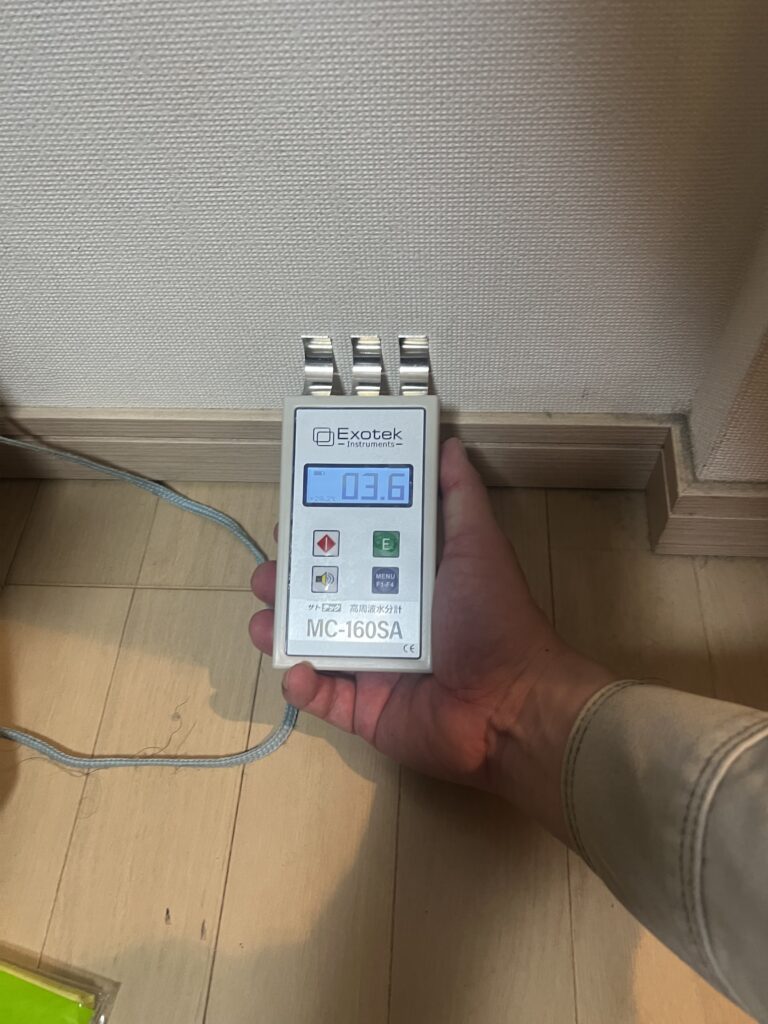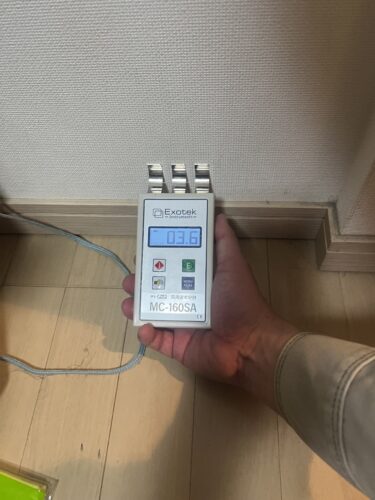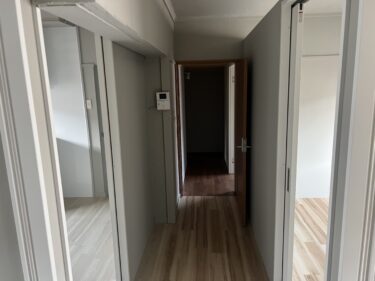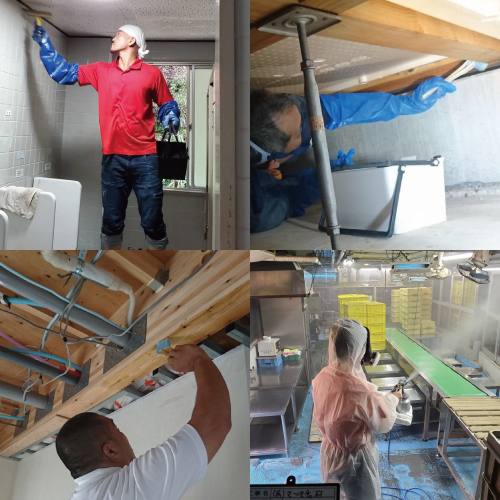Even in luxurious homes, ZEH (Net Zero Energy Houses), and vacation properties designed to provide comfortable living environments, mold issues are unavoidable. Especially in Japan’s humid climate, condensation and underfloor moisture frequently cause mold growth. Mold is not only an aesthetic problem but also a health hazard and a factor in structural deterioration. Early intervention is essential.
This article explains in detail the causes of mold and countermeasures for different types of residences such as luxury homes, ZEH homes, and vacation properties. It provides practical information including underfloor moisture testing, condensation prevention strategies, and how to choose a trustworthy mold removal company.
By reading this article, you will understand how to implement mold prevention measures tailored to your home’s structure and characteristics, and learn concrete methods to maintain a healthy and comfortable living environment. Preventing recurrence will help ensure long-term peace of mind.
1.Odor Control and Prevention in Luxury Homes
Luxury homes are often highly airtight and use special materials, which can trap mold odors. This section identifies the sources of mold odor and introduces effective countermeasures.
1-1. Causes of Mold Odor Unique to Luxury Homes
Luxury homes typically feature high airtightness and excellent insulation, resulting in inadequate ventilation with the outside air. This leads to trapped indoor humidity, fostering mold growth. Additionally, natural materials used in walls and underfloor structures tend to absorb moisture, enabling mold to root deeply and spread in unseen areas. Invisible mold can emit a distinct odor that permeates the home and releases spores into the air, increasing health risks. Using air fresheners may mask the smell temporarily, but addressing the root cause is key to elimination.
1-2. Effective Measures for Mold Odor Control and Prevention
To eliminate mold odor, the source must first be identified and removed. In luxury homes, mold often hides in inaccessible areas like attics, underfloor spaces, and inside walls. Professional inspections are critical. Advanced methods like the MIST method, which does not require scrubbing or abrasion and avoids damaging materials, are ideal. Post-removal anti-mold treatment is also essential. Preventing recurrence requires a comprehensive approach: installing dehumidifiers or ventilation systems, reassessing insulation, and rearranging furniture to promote airflow. A 24-hour ventilation system is especially effective for maintaining air circulation in high-end homes.
2.Underfloor Mold and the Importance of Moisture Content Testing
The underfloor area is prone to moisture accumulation and mold. High moisture content accelerates mold development, making regular inspections essential.
2-1. Why High Moisture Content Promotes Mold
Mold tends to grow when wood moisture content exceeds 20%. Underfloor areas are susceptible to rising ground moisture. Without sufficient ventilation, this leads to increased moisture content. In rainy seasons or airtight homes, trapped humidity fosters mold growth in wood and insulation materials. This can result in structural damage, pervasive odor, and airborne spores that degrade overall living conditions.
2-2. Moisture Testing Methods and Solutions
Accurate underfloor moisture assessment requires professional tools. Visual checks are unreliable; a professional survey is recommended. Multiple measurement points are checked, and if moisture exceeds 20%, ventilation improvements or dehumidifier installation may be necessary. Installing moisture barriers or underfloor fans also helps prevent moisture buildup. Using the MIST method to remove mold and applying anti-mold treatments minimizes recurrence risk.
3.Mold Issues in ZEH Homes and Countermeasures
ZEH homes offer high energy efficiency and airtightness, but this makes humidity control more challenging. This section details mold risks and how to address them in ZEH residences.
3-1. Causes of Mold in ZEH Homes
ZEH homes are designed with superior insulation and airtightness to improve energy efficiency. However, this sealed structure can trap moisture. Condensation near windows, in wall insulation, or underfloors fosters mold. Though ZEH homes often feature 24-hour ventilation systems, poor maintenance or blocked vents can reduce their effectiveness, allowing humidity to build up.
3-2. Effective Mold Prevention in ZEH Homes
Regular maintenance of ventilation systems is vital: clean filters and check airflow paths. Install a hygrometer to monitor indoor humidity, keeping it below 60%. Use moisture-regulating materials or absorption sheets in areas prone to condensation. If mold is present, the MIST method enables safe and thorough removal without damaging materials—ideal for ZEH structures.
4.Condensation and Mold in Highly Insulated Homes
While high-insulation homes are comfortable, they trap internal humidity, increasing the risk of condensation and mold. This section explains the mechanisms and solutions.
4-1. Mechanism of Condensation in Insulated Homes
During winter, warm indoor air meets cold surfaces like windows or walls, causing condensation. High airtightness can worsen this by trapping humidity. Condensation can also occur in unseen areas like wall cavities or attics, where mold then thrives. This can lead to wood decay or insulation degradation.
4-2. Concrete Measures to Prevent Condensation
Ensure continuous operation of 24-hour ventilation systems to prevent stagnant air. Install high-performance double-glazed windows and use proper insulation to balance indoor temperature. Combine with dehumidifiers or use humidity-control interior materials. Professional mold removal methods like the MIST method are recommended for visible and hidden mold.
5.Mold Maintenance in Kansai Vacation Homes
Vacation homes are used infrequently, allowing air stagnation and moisture accumulation. Kansai’s humid climate necessitates regular mold maintenance.
5-1. Why Mold Easily Occurs in Vacation Homes
Vacation homes are often used only seasonally, resulting in poor ventilation. Kansai’s climate, especially during the rainy season or summer, creates high humidity. Closed interiors absorb this moisture, encouraging mold on walls and furniture. Mountainous or lakeside locations increase humidity further, with mold frequently appearing in underfloors or attics. Left unaddressed, this affects both materials and property value.
5-2. Regular Maintenance and Mold Prevention
Annual inspections are crucial, especially before the rainy season and during dry winter months. Install moisture barriers in underfloors and storage spaces, and use dehumidifiers and humidity-control materials. Ventilate the home before use, and refresh indoor air with air conditioners or dehumidifiers. Combine regular cleaning with professional maintenance. The MIST method allows for safe, thorough mold removal and long-term prevention.
6.Choosing a Mold Removal Company for Luxury Homes
Luxury homes require gentle treatment of materials. Choosing a trustworthy mold removal company is critical.
6-1. Key Points for Selecting a Reliable Company
Ensure the company specializes in mold removal—not just cleaning—and has a proven track record. Verify that their products are safe for humans and pets, especially in homes with children. Choose a company that explains mold types, locations, and follow-up anti-mold procedures in detail. Post-service support is another important factor.
6-2. Mold Removal Methods Suitable for Luxury Homes
The MIST method is ideal, using mist-sprayed custom solutions that penetrate deeply to break down mold without abrasion. It’s suitable for wood, natural materials, and historically significant interiors. Post-removal antimicrobial treatments prevent recurrence while preserving home value.
7.Simultaneous Mold Prevention and Renovation
Mold removal alone doesn’t solve root issues. Addressing structural or environmental problems through renovation ensures lasting results.
7-1. Why Renovation is Necessary to Prevent Recurrence
Mold often returns if root causes like poor ventilation, insulation deficiencies, or leaks remain. Post-removal renovations can fix these problems. Replace damp insulation, add vents, upgrade ventilation systems, and reinforce waterproofing under floors or around plumbing.
7-2. Benefits of Combined Mold Removal and Renovation
Combining renovation with mold removal improves overall efficiency. During wall repairs, hidden mold can be addressed thoroughly. Using mold-resistant materials ensures long-term benefits. This approach optimizes costs and construction timelines. The MIST method’s safe, effective treatment is ideal for renovated homes.
8.Attic Mold Inspections and Early Detection
Attics are rarely checked and prone to mold. Early detection is vital to prevent widespread damage.
8-1. Causes of Attic Mold
Attics often lack ventilation and use dense insulation. Minor roof leaks or rising indoor humidity foster mold. In winter and summer, condensation and trapped moisture raise the risk. Unnoticed mold may spread widely before being discovered.
8-2. Regular Inspections and Early Detection
Annual inspections using moisture meters or humidity sensors are advised. Signs like odors, stains, or suspected leaks should prompt immediate checks. New tools allow inspection without damaging ceilings. The MIST method provides safe, effective treatment for attic mold.
Mold Removal and Renovation by Kabibusters Osaka and Kabitore Reform Tokyo/Nagoya
Mold issues affect not only appearance and comfort but also health. Tailored, expert solutions are required for various housing types.
At Taiko Kensou Co., Ltd., we operate “Kabibusters Osaka” and “Kabitore Reform Tokyo/Nagoya,” offering advanced mold removal using our proprietary MIST method. This system dissolves mold from the roots without abrasion, adjusting formulas to suit each case.
Taiko Kensou is also one of the few firms nationwide offering integrated mold removal and renovation. We provide full-service support from mold treatment to structural repairs, insulation upgrades, ventilation improvements, and waterproofing. This one-stop approach eliminates the need for multiple contractors, streamlining the process and optimizing costs.
Our remodeling division leverages decades of construction expertise, offering structural renovations to improve insulation, earthquake resistance, ventilation, barrier-free designs for aging households, and aesthetically enhanced spaces. We manage all phases—from planning and construction to aftercare—in-house, offering optimal, personalized solutions.
For a mold-free, safe, and comfortable home, contact Kabibusters Osaka or Kabitore Reform Tokyo/Nagoya. We provide comprehensive, responsible support—from removal to prevention and total home improvement. Please feel free to reach out. We are committed to protecting your home.





